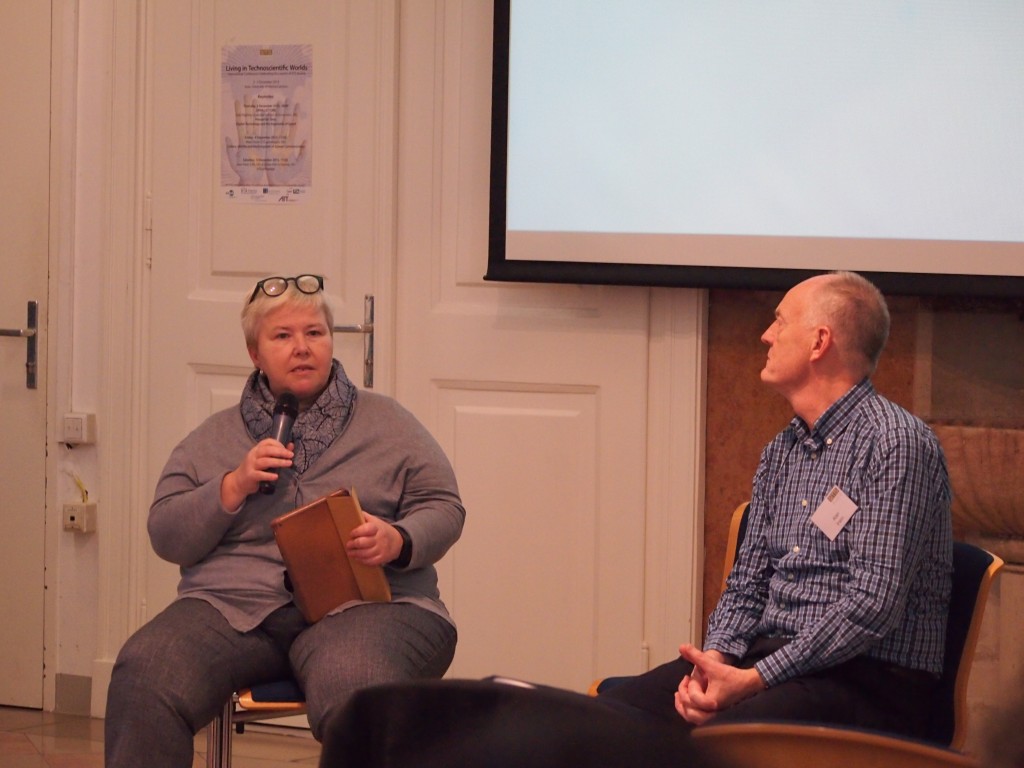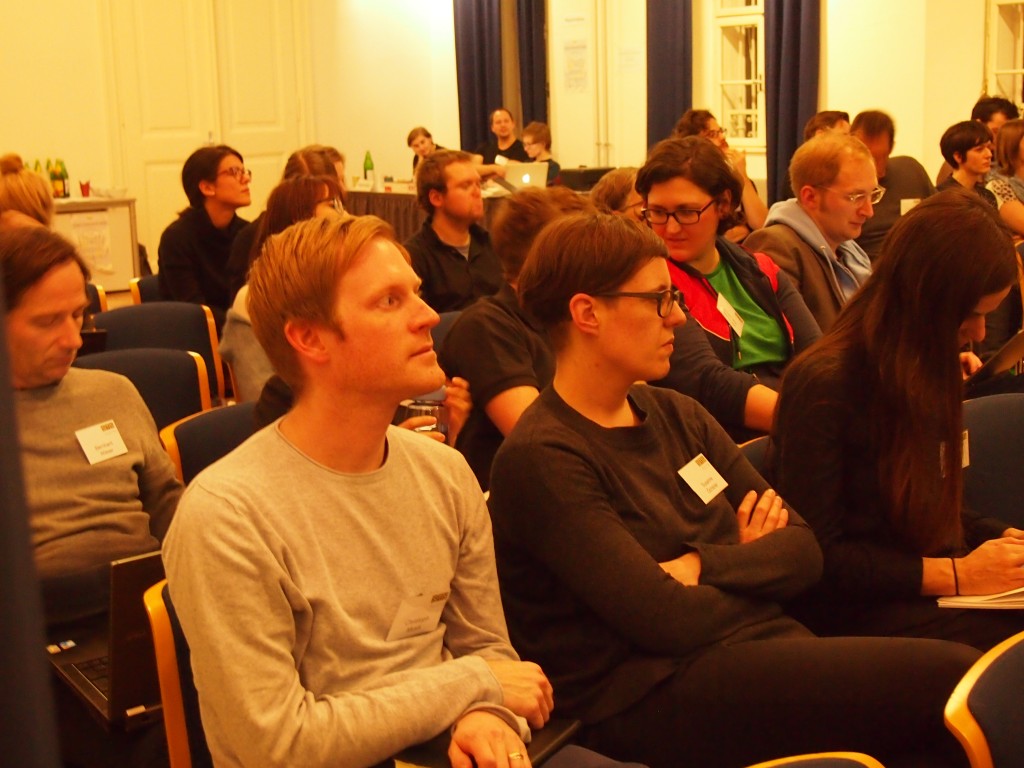by Erik Aarden

How do we make sense of the technoscientific worlds we live in? This question was central to a conference in Vienna in December 2015, which celebrated the launch of a new national association in science and technology studies, STS Austria. The conference brought together a diverse program exploring the many themes of interest to STS (and in the interest of full disclosure, I was one of the people responsible for that program). The founding of such a society is a good occasion for celebration, as was the diversity of cases and perspectives brought forward at the conference. Yet in the increasingly transnational context of both STS as a field and the technosciences it studies, what exactly were we celebrating? How to position an “STS Austria” in relation to technoscientific worlds that increasingly cross boundaries? As I hope to illustrate with some impressions from the conference, the thing to celebrate is both the vibrancy of the field in places where it finds firm footing and the openness to the great beyond such a solid base allows.
The paradox between the locally situated dimensions of STS and its interest in phenomena that circle the world was also at the center of the lively closing discussion. This panel that engaged much of the audience explored the multiple relations between STS and practices –its own and those under its microscope. Shared in this discussion was a view of STS as a field with a mission to critically encounter the mostly unquestioned sociomaterial practices around us – rather than one that carefully polices its boundaries, concepts and approaches. This sense of what STS is about opened up many further reflections from the audience on the diversity of the field and the challenges it faces. How to deal with the diversity in geographies, career pathways, disciplines, concepts and methods that crystallize in both the field and its objects?
This diversity was explored throughout the conference, revolving around the theme of understanding living in technoscientific worlds as the shared concern of the field of STS. The conference thereby showed from many angles how rich and fruitful this approach can be – although I can offer only small sniffs and tastes here. Addressing science and daily lives explicitly in her keynote on science communication, Maja Horst argued for the importance of telling stories. Horst herself brought this adage in practice by sketching many cultural manifestations of science communication that together build an ecosystem aimed at diffusing science in our lives in various forms. Earlier in the conference, several participants in a panel on reflexivity in governing technoscience addressed similar questions, in seeking to unravel the promises and discourses of scientific futures from the point of view of the futures we find democratically desirable.
Other contributions to the conference addressed our daily encounters with technoscience in more mundane practices. A session on the orderings that small instruments for monitoring, tracking and assisting things and people produce – from clothes in the store to the elderly in their homes – richly illustrates the extent to which our technologies embody implicit instruction manuals for how to live. Moving at a similar scale, Judy Wajcman’s public lecture engaged with ubiquitous digital communication technologies. Presenting a sophisticated critique of the idea that these machines rush and devalue our daily social lives, Wajcman opened up exciting perspectives on how our social priorities and expectations are reflected – rather than determined – by the technologies surrounding us.

This post can only reflect a minor fragment of the conference; and yet it speaks to the colorful diversity of cases and perspectives a gathering engaging with questions of living in technoscientific worlds may produce. Yet this diversity, which –among other things – extended far beyond Austria’s borders raises the stakes for the occasion the conference celebrated. While I hardly consider myself an authority to speak for Austrian STS, the birth of STS Austria shows that the field is alive and well in this country. Still, the question what then is Austrian about the field celebrated there is a harder nut to crack. My preliminary answer would be to acknowledge the symbolic importance of making STS visible within national infrastructures that continue to matter. As indicated in the concluding discussion, education, funding, and careers are often still shaped by national boundaries, even if the latter have become more porous. At the same time, we should think about STS and its objects in technoscientific worlds that consist of increasingly transnational academic and intellectual networks. From our own field we may further learn that the worlds our field lives in are equally complex, hierarchical and situated at multiple scales as other technoscientific practices. From that vantage point the main message from the conference may thus be for STS to continue questioning boundaries, opening black boxes and engaging with living in sociomaterial practices that surround us, out of a spirit of cross-generational, cross-institutional and cross-national interest and generosity – located in Austria as much as elsewhere.
Erik Aarden is postdoctoral university assistant with the STS Department at the University of Vienna. In his research and teaching he is interested in the relations between science and technology, socio-political orders and implications for distributive justice, seen through a comparative lens and with a focus on biomedicine